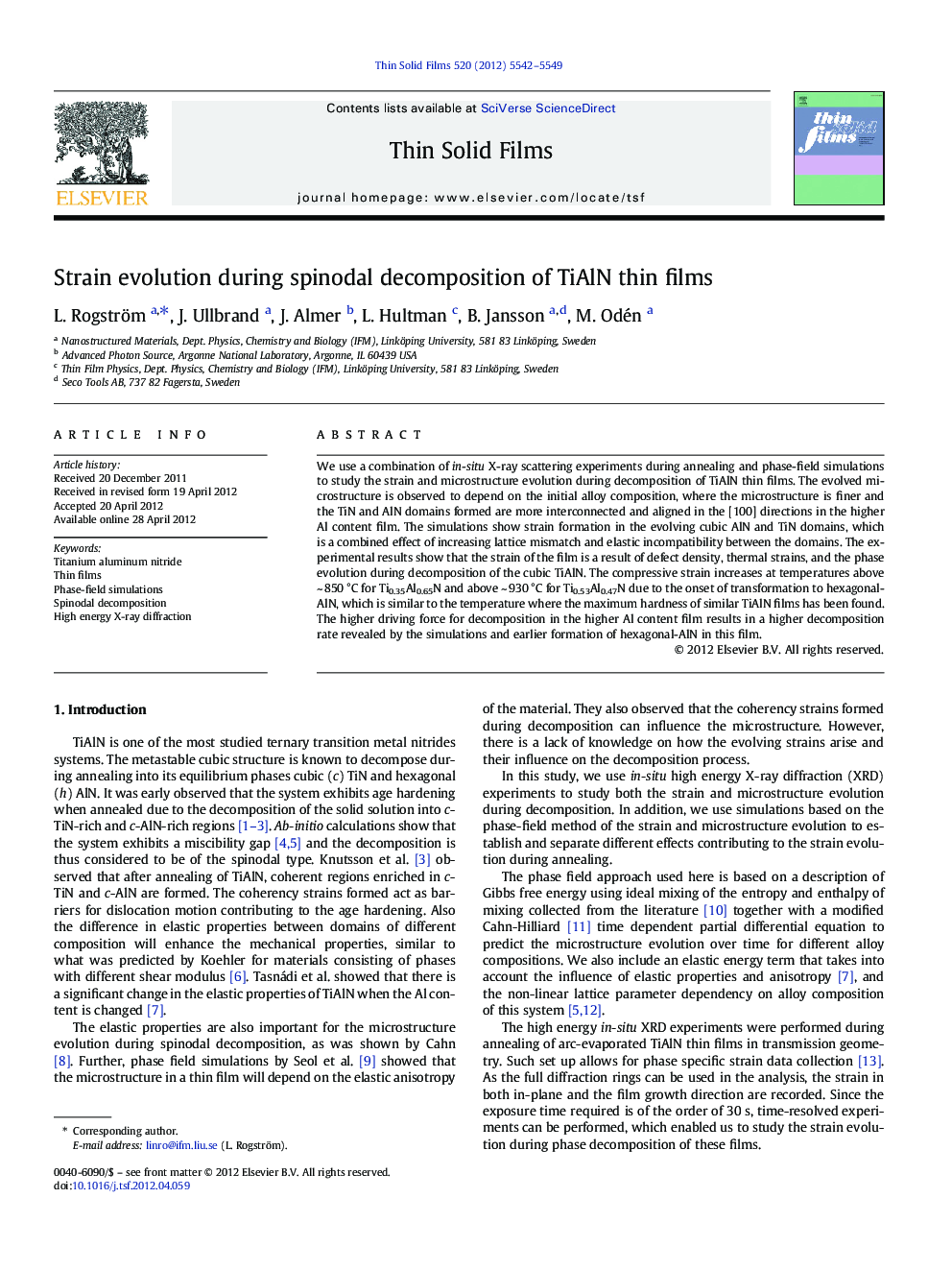| Article ID | Journal | Published Year | Pages | File Type |
|---|---|---|---|---|
| 1667403 | Thin Solid Films | 2012 | 8 Pages |
We use a combination of in-situ X-ray scattering experiments during annealing and phase-field simulations to study the strain and microstructure evolution during decomposition of TiAlN thin films. The evolved microstructure is observed to depend on the initial alloy composition, where the microstructure is finer and the TiN and AlN domains formed are more interconnected and aligned in the [100] directions in the higher Al content film. The simulations show strain formation in the evolving cubic AlN and TiN domains, which is a combined effect of increasing lattice mismatch and elastic incompatibility between the domains. The experimental results show that the strain of the film is a result of defect density, thermal strains, and the phase evolution during decomposition of the cubic TiAlN. The compressive strain increases at temperatures above ~ 850 °C for Ti0.35Al0.65N and above ~ 930 °C for Ti0.53Al0.47N due to the onset of transformation to hexagonal-AlN, which is similar to the temperature where the maximum hardness of similar TiAlN films has been found. The higher driving force for decomposition in the higher Al content film results in a higher decomposition rate revealed by the simulations and earlier formation of hexagonal-AlN in this film.
► Strain and microstructure evolution during annealing of TiAlN are studied. ► The strain is a result of defect density, thermal strains and the phase evolution. ► Strains evolve due to differences in molar volume between TiN- and AlN-rich domains. ► Transformation to hexagonal AlN causes formation of compressive strains above 850 °C. ► Higher Al content results in a higher rate of decomposition.
